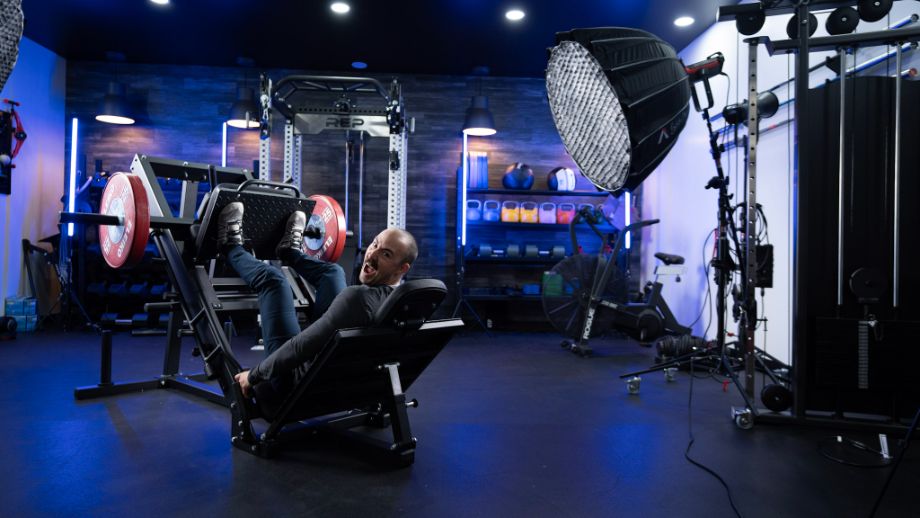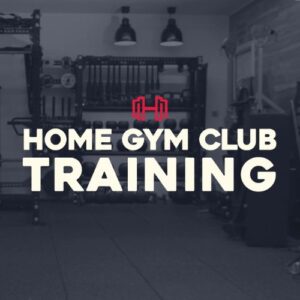We test and review fitness products based on an independent, multi-point methodology. If you use our links to purchase something, we may earn a commission. Read our disclosures.
Your lower body is home to some of the largest muscle groups in the human body, like the quads, hamstrings, and glutes. With large leg muscles like these, it’s vital to train them and not skip leg day—and I’m not saying that only because I’m a competitive Olympic weightlifter. There are many benefits of squats and leg exercises for athletes and fitness enthusiasts alike.
For beginners in a commercial gym, or for traveling home gym users, here is a list of some of the best leg machines you’ll find in most gyms. From the best cable machines to using free weights, each machine approaches different muscles in different ways, which is sure to provide you with a great workout for the lower legs. Along with this, we’ll go over the benefits of leg machines and some safety tips for those new to these leg machines, both in commercial gyms and garage gyms.
RELATED: Home Gym vs Gym Membership
Why Leg Machines?
Leg machines can be vital for beginners and advanced lifters alike because of their tendency to be isolation exercises, meaning they focus on one muscle instead of working entire muscle groups. Because many leg machines move weight in one plane of motion, they can help isolate muscles in your training, but also simplify the movement for newer lifters and those wanting targeted strength training.
In your strength training, leg machines can provide stability that free weights can’t. This makes them great for someone new to movements to get a feel for the exercises before moving onto free weights like a barbell and weight plates.
Greater stability will help reduce the risk of injury to a beginner—although ultimately a lifter will get the most benefit by training their own stability with free weights and compound exercise movements, in tandem with isolation exercises. Even though exercise equipment with a fixed range of motion can be a good place to start, you’ll ultimately want the challenge from a barbell squat out of a power rack.
Speaking of squat racks, let’s dive into our first leg machine pick.
Squat Rack
Whether it’s a power rack, cage, half rack, or a free-standing squat stand, one of the best gym machines to train your legs is a squat rack. They are some of the most versatile pieces of equipment for training your legs, offering the ability to perform leg exercises like squats, deadlifts, and lunges (plus some upper body exercises like the bench press).
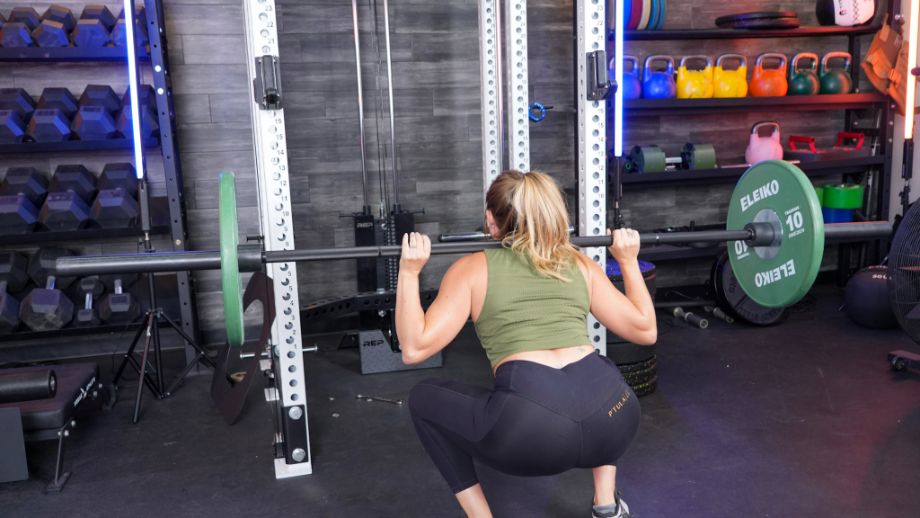
The challenge of the barbell squat as a compound exercise makes it my favorite leg exercise to perform, and it should be a staple in strength training. Not only does the squat strengthen the quadriceps, glutes, and hamstrings, but it can also build core strength in the upper and lower back, as well as other leg muscles: calves, adductors, and hip flexors.
RELATED: What Muscles Do Squats Work?
Because of their versatility, a power rack is typically a great addition to a garage gym. With a rack set up with an Olympic barbell and plates, you’ll be able to target your leg muscles with a variety of exercises. Plus, bailing on a bad rep is safe, as the safety arms—usually designed as pins, arms, or straps—will catch the barbell, minimizing any damage to your gym equipment and floor.
Smith Machine
The Smith machine is set up similarly to a squat rack, except that the barbell is fixed along two posts and slides down and up with the use of a carriage system. The exercise machine has adjustable safety stoppers along the track to stop the bar during any missed rep. The posts are typically set vertically or at a slight angle; the angle can help give the Smith machine a more natural line of movement through a Smith machine squat.
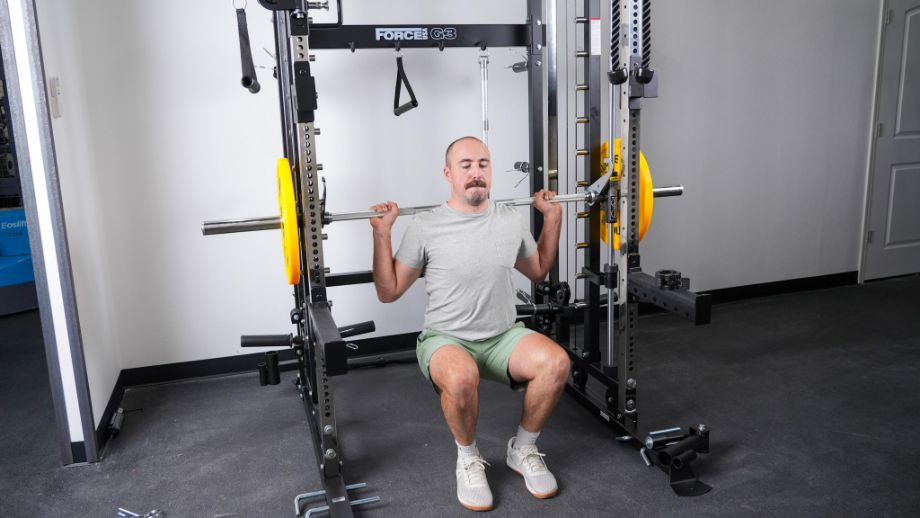
Like a squat rack, the Smith machine provides a good amount of versatility, too, allowing for squats, RDLs, calf raises, and more. The guided rails of the Smith machine add stability to exercises, making it a great option for unilateral exercises like split squats or single-leg Romanian deadlifts. Furthermore, you can grab a weight bench for hip thrusts, to isolate the gluteus maximus.
While Smith machines are less common in home gyms, you can still find them as part of some functional trainer combos, such as the Force USA G3.
Leg Press Machine
Probably the most popular leg machine in commercial gyms, the leg press machine is a great supplementary exercise to the squat. It can also be a great alternative to squats for lifters dealing with back pain.
Often plate-loaded, leg press machines come in three different angles: vertical, horizontal, and 45-degree angles. For a home gym, vertical leg press machines will take up the least amount of space, but at commercial gyms, 45-degree leg press machines tend to be the most popular.
The starting position of the leg press has the user lie on a backrest with their legs extended on a foot plate, then bend at the knees to lower the weight, and then press with the legs back to extension. Because the weights are on guide rails, you’ll typically be able to lift more weights on a leg press machine than a barbell squat.
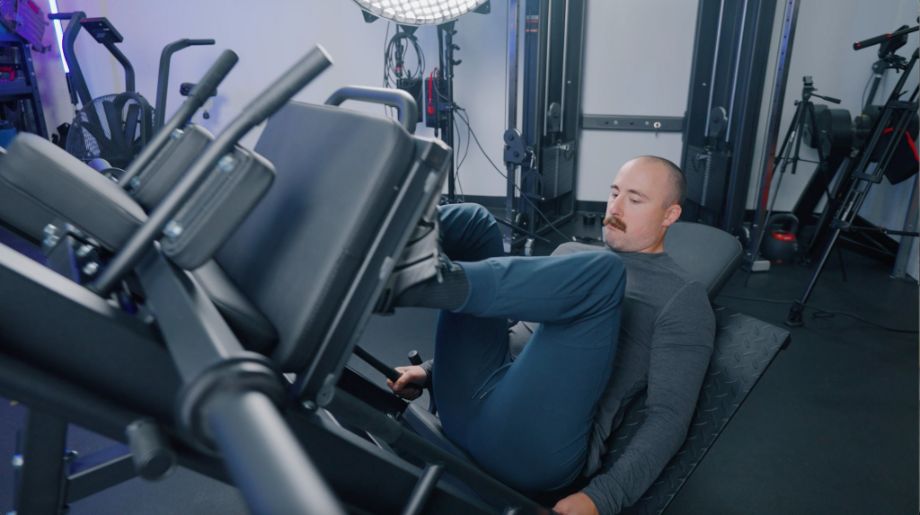
While not as versatile as other leg machines, your foot placement can determine which muscle groups are targeted more. A more narrow stance with toes pointed forward will target the quads more, while a wide stance with the feet more forward will train the glutes and hamstrings.
Hack Squat Machine
While a similar movement to the leg press, a hack squat machine has you positioned quite differently than a leg press. Usually positioned at 45 degrees, the hack squat has you positioned underneath shoulder pads and against a backrest, standing up to extension with your feet on a footplate. Like a leg press, the weights are on guide rails, allowing you to isolate the leg muscles more.
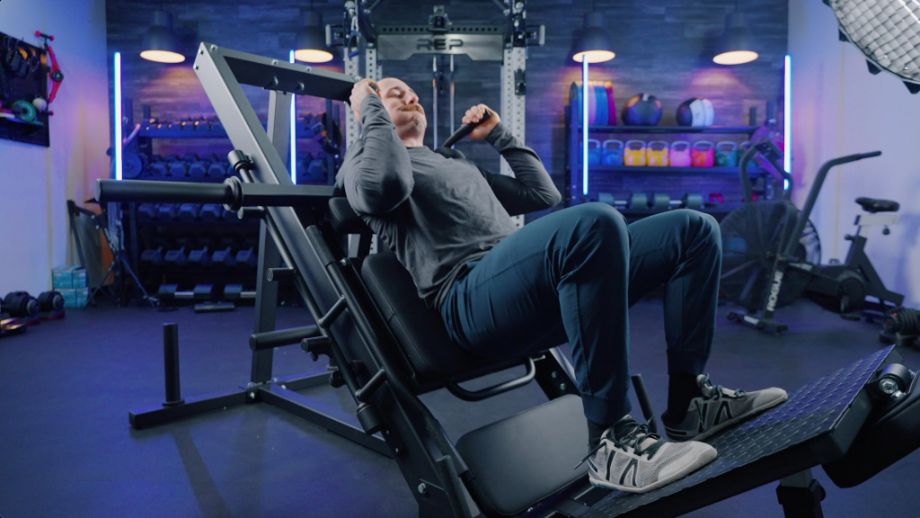
Because of the positioning, the hack squat machine is sort of in-between the barbell squat and leg press, as the hack squat still requires you to support the weight with your upper body. The angle and backrest, however, take some of the pressure off the lower back—just not as much as a leg press. Because of the adjusted positions, the hack squat will typically be less weight than a leg press, too.
Like a leg press machine, placing your feet differently can provide different muscle activation. As these leg press and hack squat machines are bulky, they’re not common in home gym use; however, some machines like the Titan Leg Press Hack Squat combine the two machines together, making them a more versatile piece of equipment for home gyms.
Belt Squat Machine
Belt squat machines can be another alternative to regular barbell squats for those with upper back issues, as they take the stress of the weight off your shoulders and back and put it at the hips with the use of a belt (hence the name). There are three general ways belt squats are constructed: with weights plate-loaded and directly under the user, using a cable system, or with a lever arm.
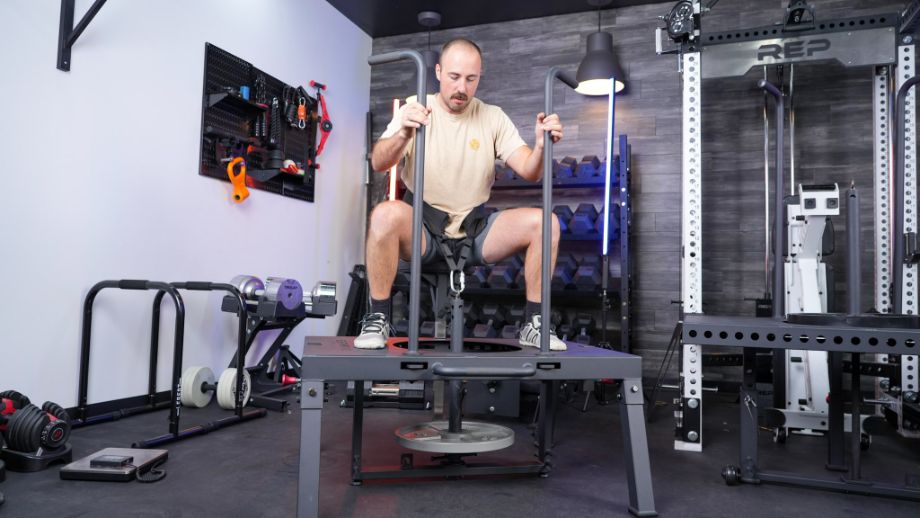
With a belt squat, the versatility can vary based on the construction and build of the machine. For example, the Titan Fitness SquatMax-MD belt squat machine has a unique construction that positions the weights directly under the lifter and allows for some movement back and forth, making it the best-feeling belt squat machine we’ve tested out. However, the build limits it from having the versatility of a cable machine like the Rogue Rhino Belt Squat, which can be used for various leg exercises and upper body movements.
Leg Extension Machine
Leg extension machines are fantastic for isolating the quadriceps, although they don’t provide a lot of versatility. The machine places the user in a seated position, with their legs at 90 degrees and their shins placed behind a pad. The user straightens their legs to extension with their toes pointing toward the ceiling. The pad is connected to the weights, which are either plate-loaded or on a weight stack.
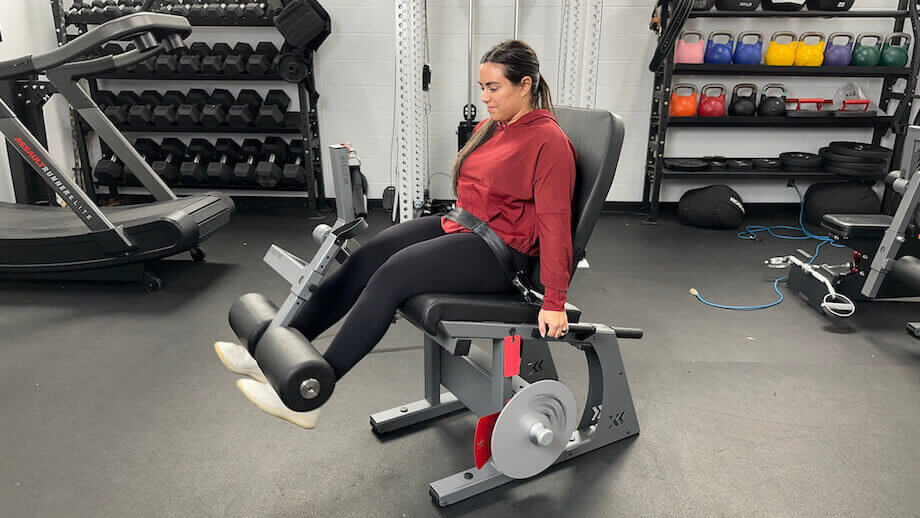
While there isn’t a lot of versatility in a leg extension machine, there are a few variations to consider. For one, you can train one leg at a time for unilateral training. Additionally, the angle of your toes can affect the main area the quads are training. For example, pointing the toes inward can get the outer area of the quad more, while an outward point will train the inside of the quad—notably the vastus medialis.
Because the leg extension machine doesn’t have a lot of versatility, in home gyms it’s most commonly seen as an attachment for the best weight benches. However, if you lack the proper attachments, you can simply do a leg extension by pinching a dumbbell between your legs.
RELATED: How To Do Leg Extensions At Home
Leg Curl Machine
Unlike leg extension machines, leg curl machines focus on the flexion of the legs, which isolates the hamstrings and glutes more. Typically, leg curl machines come as seated, standing, or lying machines. The most popular option in commercial gyms is the seated leg curl, as many gym goers don’t like lying down on their stomach for an exercise.
No matter the starting position, the user begins with their legs extended and a roller pad right at their ankles, as well as a pad to keep their knees fixed in place. The user flexes at the knees, bringing their heels toward their glutes. Like the leg extension machine, you’ll be able to train unilateral and bilateral movements to isolate the posterior chain.
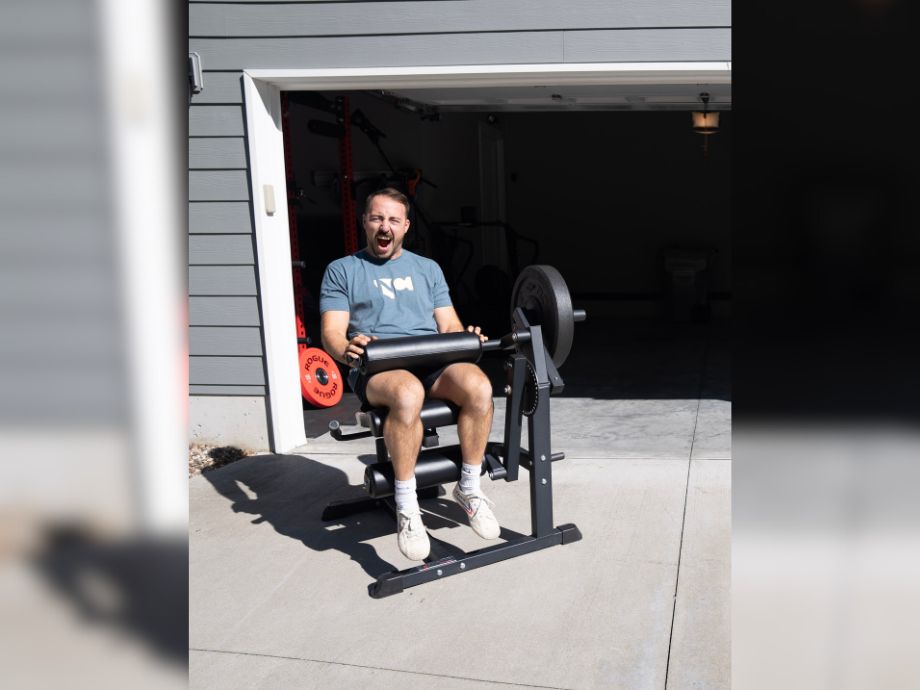
Leg extension and leg curl machines aren’t very versatile, so many home gym users look for compact solutions to be able to perform them in their garage gym. One such solution is a two-in-one machine, such as the Titan Seated Leg Curl/Extension Machine.
Hip Abductor/Adductor Machine
These are two distinct machines that isolate stabilizing muscles in the hips, particularly the hip abductor and adductor. The hip abductor focuses on moving the leg away from the center of the body, while the adductor brings the leg in. Because these are stabilizing muscles, most lifters won’t train these movements heavy, but instead focus on strengthening these muscles to support the hip joint.
Both the hip abductor and hip adductor machines start with the user in a seated position. For a hip abductor machine, there are two pads on the outside of the knees, which the user will then press apart with their legs to train the abductors and glutes. For a hip adduction machine, the pads are on the inside of the knee, and the user presses their knees inward to train the hip adductors.
Because these bulky machines are so specialized, you’ll rarely see them in a home gym, as they take up a lot of space with little versatility. However, if you’re looking to strengthen your abductors and adductors at home, resistance band workouts like banded clamshells can be a good, lightweight alternative.
Nordic Curl Bench
For another way to train the hamstrings and posterior chain, you can use a Nordic bench, ideal for the challenging Nordic curl. The lifter begins upright with their knees on the bench and their feet anchored by a roller pad. Maintaining a neutral spine, the user leans forward, touches their chest to the bench, and brings their upper body back to upright, all while using their hamstrings to pull themselves back up.
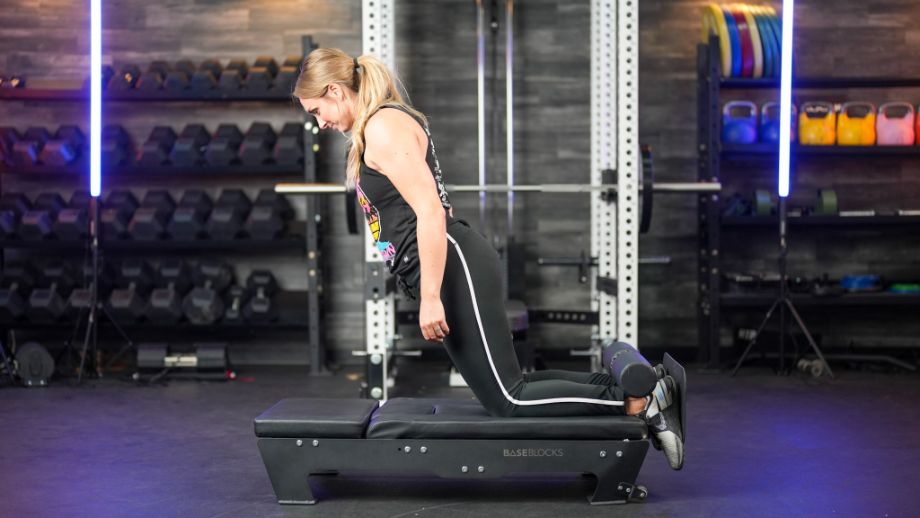
RELATED: 17 Lower Back Exercises for Stability and Strength
This is one of the most challenging bodyweight exercises to perform, and you may need to progress to doing a full Nordic curl. You can start by stacking weights as targets for your chest and progressively add to the range of motion until you’re reaching the bench. Some Nordic benches also have added pads that can be adjusted for Nordic curl progressions, like the Shogun NORD-EX.
Calf Raise Machine
If you’re looking for a machine that’ll target your calf muscles like no other, then the calf raise machine is your best bet. These machines usually have the lifter in a standing position (although there are seated variations, too) with their shoulders underneath pads and their toes on a narrow platform with their heels hanging off. The user lifts up onto their toes to flex their calves and then brings their heels back down below their toes for a full range of motion before the next rep.
Although calf raise machines are great for isolating the calves in a gym setting, the machine is often too big and bulky for a home gym. Instead, a good alternative is to hold dumbbells while doing calf raises off a raised platform or on a slant board.
Safety Tips for Leg Workouts
New to these machines? If you haven’t tried these leg machines before, here are some tips to ensure you’ll get the best results with a minimal risk of injury.
- Get acquainted with the machine. Before getting on a machine, make sure to take the time to read any labels and safety features. This will help you understand the proper use of the machine and minimize the chance of using it improperly, or even worse, unsafely.
- Prioritize form. First, focus on proper form and technique, keeping weights light and trying to keep the right muscle groups involved during your reps. Build up to the full range of motion before worrying about adding weight.
- Get all the leg muscles. Ideally, you won’t use every leg machine available every day you walk into the gym. Instead, spread out the machines you use, and make sure that the machines you do use have a good balance of which leg muscles are being trained. If you have a couple of quad-dominant machines at first, focus on hamstrings next with a leg curl machine, for example.
- Work with an expert. One of the best things you can do if you’re new to a gym setting is work with a certified personal trainer. They’ll be able to set up a proper workout routine to ensure you’re making the progress you want in the gym. Additionally, their input will ensure that your form is correct throughout the exercises.
RELATED: Best Personal Training Certifications
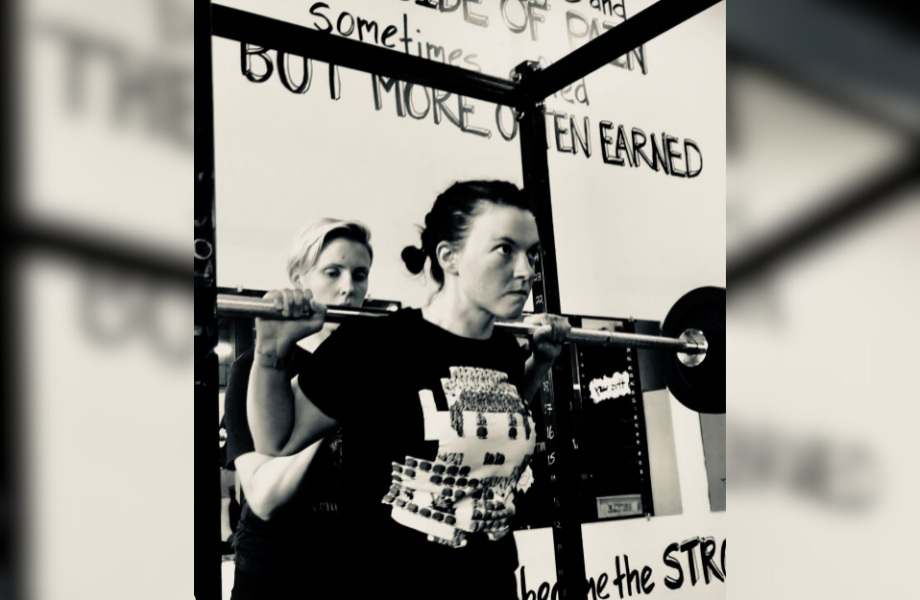
Best Leg Machines: Final Thoughts
Hopefully by now you’ve gotten a crash course in some of the best machines for legs you can find in a commercial gym setting—as well as a few alternatives or options for a home gym. No matter your workout routine, the main things to keep in mind for leg machine workouts are to:
- Know the machine
- Focus on the form of the exercise first
- Spread the love to all your leg muscles
- Work with a personal trainer if you’re just getting started
Keep these in mind next time you tackle a leg workout with these machines, and you’ll be sure to get the most out of your routine.
Best Leg Machines: FAQs
What machine is good for legs at the gym?
There are a variety of great leg machines at a gym. One of the most common machines, and a personal favorite of mine, is the squat rack with a barbell, which provides a lot of versatility. However, some of the more popular leg machines at a commercial gym are:
-Leg press machines
-Hack squat machines
-Leg extension and leg curl machines
-Hip abductor and adductor machines
-Belt squat machine
-Calf raise machine
-Smith machine
Which machine is best for quads?
Leg press machines, Smith machines, and hack squat machines can focus on the quads based on how the feet are positioned. Typically, a more narrow stance with the feet a little more forward will focus on the quads more. If you’re looking for a leg machine that almost completely isolates the quads, there is the leg extension machine.
What are the best leg press machines for home gyms?
Because leg press machines don’t have a lot of versatility outside of leg pressing, most home gym users prefer a vertical leg press machine for their garage gym, as it is the most compact version of a leg press. However, some leg machines also can double as a hack squat, making them more versatile. Some home gym users might find their large footprint worth it with the added versatility.
RELATED: Titan Leg Press Hack Squat Review
Further reading

We’ll let you know how to keep your weight plates off the floor with our picks for the best plate tree. Read more

Which adjustable dumbbell is right for your needs? We break down the similarities and differences of these top brands in our NÜOBELL vs Bowflex comparison. Read more

The Zercher squat will take your mental toughness and quad strength to a new level, and here are my trainer tips on how to do it. Read more

Your lower body is home to some of the largest muscle groups in the human body, like the quads, hamstrings, and glutes. With large leg muscles like these, it’s vital to train them and not skip leg day—and I’m not saying that only because I’m a competitive Olympic weightlifter. There are many benefits of squats and leg exercises for athletes and fitness enthusiasts alike.For beginners in a commercial gym, or for traveling home gym users, » Read more about: An Olympic Weightlifter’s Picks for the Best Leg Machines at the Gym » Read more

